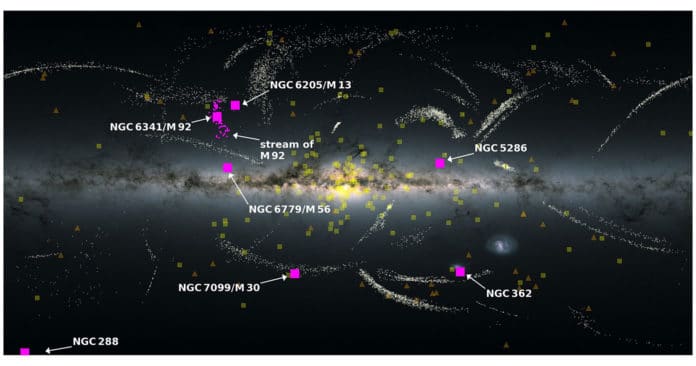Since the formation of the Milky Way, it has been growing in both mass and size through a sequence of mergers with other galaxies. The fascinating fact: this process is still ongoing.
By using data from ESA’s Gaia spacecraft, astronomers witnessed it. This allows them to reconstruct the history of our Galaxy. They also created a family tree of smaller galaxies that have helped make the Milky Way what it is today.
Khyati Malhan, a Humboldt Fellow at the Max-Planck-Institut für Astronomie, Heidelberg, Germany, and colleagues published their latest work on the same subject Astrophysical Journal. They analyzed data based on Gaia’s early third data release (EDR3), looking for the remains of smaller galaxies merging with our own.
The halo of the Milky Way contains most of these remains.
When a foreign galaxy collides with our own, the tidal force pulls it apart. If this process is slow, the stars from the merging Galaxy will form a vast stellar stream that can be easily distinguished in the halo. If the process is quick, the merging Galaxy’s stars will be scattered throughout the halo, and no clear signature will be visible.
But merging galaxies may not consist only of stars. It may also be surrounded by a population of globular star clusters and small satellite galaxies. So, the team looked for these in the Gaia data.
The team analyzed 170 globular clusters, 41 stellar streams, and 46 satellites of the Milky Way. They plotted them based on their energy and momentum. Doing so revealed that 25 percent of these objects fall into six distinct groups.
Each group is a merger taking place with the Milky Way. There was also a possible seventh merger in the data. Five had been previously identified on surveys of stars: Sagittarius, Cetus, Gaia-Sausage/Enceladus, LMS-1/Wukong, and Arjuna/Sequoia/I’itoi. But the sixth was a newly identified merger event that astronomers dubbed Pontus.
The team determined how Pontus had been pulled apart by the Milky Way. They estimated that Pontus probably fell into the Milky Way some eight to ten billion years ago.
They noted, “Four of the other five merger events likely also took place around this time. But the sixth event, Sagittarius, is more recent. It might have fallen into the Milky Way sometime in five to six billion years. As a result, the Milky Way has not yet been able to disrupt it completely.”
Piece by piece, astronomers are fitting together the Galaxy’s merger history, and Gaia data is proving invaluable.
Journal Reference:
- Khyati Malhan et al. The Global Dynamical Atlas of the Milky Way Mergers: Constraints from Gaia EDR3–based Orbits of Globular Clusters, Stellar Streams, and Satellite Galaxies. DOI: 10.3847/1538-4357/ac4d2a
